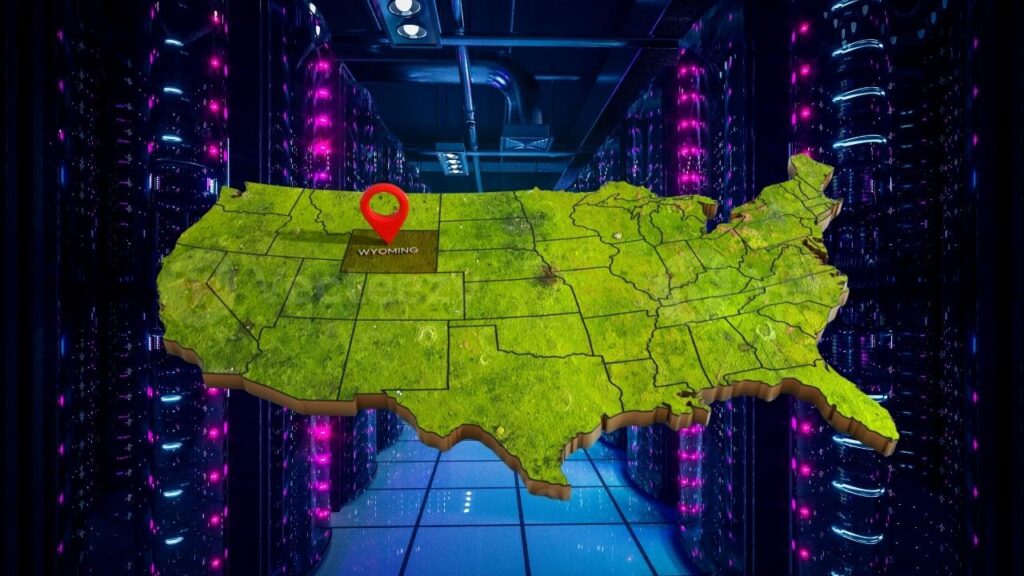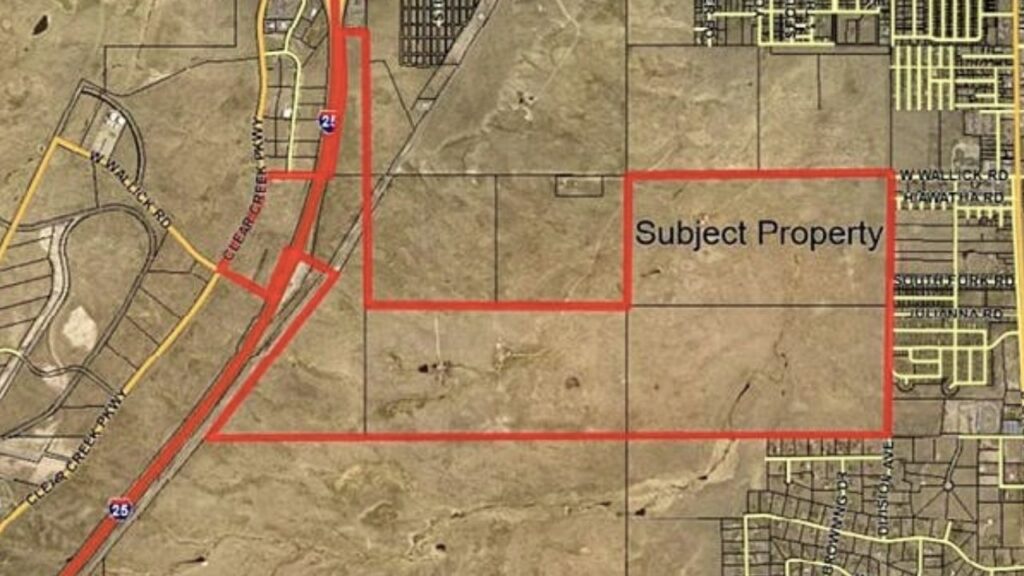Artificial intelligence (AI) is transforming how we live and work, but powering AI at scale demands enormous energy. Wyoming, a state known for its vast energy production, is about to become the site of an AI data center so large it will use more electricity than all the homes in Wyoming combined. This ambitious project highlights the growing energy footprint of AI technology and the changing landscape of energy consumption in the U.S.

Table of Contents
AI Electricity Use in Wyoming
| Topic | Details |
|---|---|
| Location | Cheyenne, Wyoming |
| Initial Electricity Demand | 1.8 gigawatts (GW) — more than the combined residential use of Wyoming |
| Potential Full Scale Demand | Up to 10 GW — approximately 5 times Wyoming’s current total power generation |
| Population of Wyoming | About 590,000 people |
| Energy Sources | Dedicated natural gas and renewable energy sources, with carbon capture integration |
| Key Project Partners | Crusoe (AI infrastructure provider), Tallgrass (energy infrastructure firm) |
| Carbon Management | Use of carbon capture technology to reduce emissions |
| Economic Impact | Creation of high-quality jobs across multiple sectors including construction, technology, and energy |
| Official Website | Crusoe AI Newsroom |
The AI data center planned near Cheyenne, Wyoming is set to reshape the state’s energy and technology landscape dramatically. With electricity use projected to surpass the combined consumption of all Wyoming homes, this project highlights the massive power demands of modern AI infrastructure. By leveraging Wyoming’s abundant energy resources and integrating cutting-edge carbon management, the facility aims to power the future of artificial intelligence responsibly. This endeavor marks a pivotal moment not only for Wyoming but for the entire nation as it balances technological innovation with environmental stewardship and economic growth.
Understanding the Scale: Why Wyoming?
Wyoming is a unique choice for this massive AI data center project for several reasons:
- Energy Abundance: Wyoming produces about 12 times more energy than it consumes. Traditionally, the state exports a significant amount of this energy, mostly generated from fossil fuels like coal and natural gas. In fact, about 60% of the electricity produced in Wyoming is exported to other states.
- Climate Advantage: Cheyenne, Wyoming’s capital, offers a cooler climate, which is ideal for data centers because it helps reduce cooling costs and energy consumption necessary to keep servers from overheating.
- Existing Infrastructure: The region has been developing as a hub for data centers for years, hosting major companies such as Microsoft and Meta (Facebook’s parent company), supported by good access to fiber-optic cables and willing energy utilities.
This environment makes Wyoming an attractive location for energy-intensive AI infrastructure that requires both high power availability and cost-effective operation.
The Proposed Data Center Project and Its Massive Scale
The planned AI data center, a joint venture between regional energy infrastructure company Tallgrass and AI data center developer Crusoe, will be located a few miles south of Cheyenne near U.S. Highway 85, close to the Colorado border. The project will start with an initial electricity demand of 1.8 gigawatts and is planned to be scalable to up to 10 gigawatts as it expands.

To put these numbers into perspective:
- 1.8 gigawatts can power approximately 1.8 million homes, which already exceeds Wyoming’s entire residential demand given its population of about 590,000.
- Scaling up to 10 gigawatts would mean powering around 10 million homes, which is roughly five times the state’s current total power generation capacity.
This makes the data center’s energy demand a game changer for Wyoming’s electricity consumption and infrastructure.
Why Are AI Data Centers So Energy Intensive?
AI data centers consist of thousands of powerful servers performing complex calculations, such as training large AI models. These machines generate a massive amount of heat, so energy-intensive cooling systems must run continuously to prevent overheating.
Additional reasons for the immense energy consumption include:
- Computational power needs: AI model training requires continuous, heavy processing, unlike typical data center workloads.
- Supporting infrastructure: Power delivery, backup systems, and high-speed connections all add to the energy footprint.
- Expansion potential: The facility is designed to scale energy use dramatically as AI demand grows in the coming years.
How Will the Data Center Source Its Energy?
This data center will not rely solely on the public grid. Instead, it will have a dedicated energy supply combining:
- Natural Gas: Wyoming’s abundant natural gas reserves will provide a reliable and dispatchable power source.
- Renewable Energy: Solar, wind, and other renewable sources will be integrated to reduce the carbon footprint.
- Carbon Capture Technology: Tallgrass specializes in capturing and storing carbon emissions from natural gas generation to reduce environmental impact.
By combining these energy sources and technologies, the project aims to balance high power availability with environmental responsibility.
Economic and Workforce Impact
The AI data center is expected to bring significant economic benefits to the region, such as:
- Job creation: Positions will be available in construction, technology, data center operations, energy production, transportation, and more.
- Local investment: Large infrastructure projects like this stimulate ancillary businesses, from manufacturing to services.
- Technology leadership: The facility will cement Wyoming’s role in the nation’s expanding AI infrastructure landscape.
Wyoming Governor Mark Gordon and Cheyenne Mayor Patrick Collins have both expressed enthusiastic support, highlighting the project’s importance for local energy producers and the broader economy.
Challenges and Considerations
While this project offers impressive opportunities, it also poses challenges:
- Grid and infrastructure upgrades: Surrounding communities may require expansions to power lines and utilities to accommodate massive demand increases.
- Environmental concerns: Despite carbon capture, reliance on fossil fuels raises sustainability questions.
- Higher energy costs: Utilities may face higher operational costs that could be passed on to other customers.
- Regulatory approvals: Local and state authorities will need to ensure compliance with environmental and zoning regulations before construction begins.
Still, with informed planning and cooperation, these issues can be managed as part of the AI age’s evolving energy needs.
Practical Takeaways for Industries and Professionals
For those interested or involved in AI infrastructure development, the Wyoming data center example offers instructive lessons:
- Assess Energy Resources: Prioritize locations with abundant and affordable power, ideally combining fossil fuels with renewables.
- Plan for Scaling: AI workloads require an order of magnitude more power than traditional data centers, demanding foresight in infrastructure and supply management.
- Build Partnerships: Collaboration between technology providers, energy companies, and government entities is essential.
- Focus on Sustainability: Incorporate carbon reduction strategies like carbon capture and renewable energy.
- Develop Workforce Skills: Invest in training to meet the demands of emerging AI and power sectors.
The AI Boom Is Burning Through Power — Millions Are Already Paying Higher Electricity Bills
Why Are Some AI Chatbot Subscriptions Over $200? The Pricing Strategy Revealed
FAQs About AI Electricity Use in Wyoming
Q1: Why was Wyoming chosen for such a large AI data center?
Wyoming offers a unique combination of cheap, abundant energy, a cool climate ideal for cooling, established data center infrastructure, open land, and proactive energy companies.
Q2: How much electricity will the data center consume compared to Wyoming households?
The facility will initially use 1.8 GW—already more than the state’s residential consumption—and could expand up to 10 GW, about five times the state’s current total generation.
Q3: Will the data center be powered only by fossil fuels?
No. It will combine natural gas, renewable energy, and carbon capture techniques to reduce environmental impact.
Q4: What impact will this have on Wyoming’s status as an energy exporter?
The project will retain more energy consumption in-state, shifting Wyoming from primarily an energy exporter to a major consumer for AI infrastructure.
Q5: What kinds of jobs will the AI data center create?
The project will generate jobs in construction, technology, energy production, manufacturing, and logistics.



















